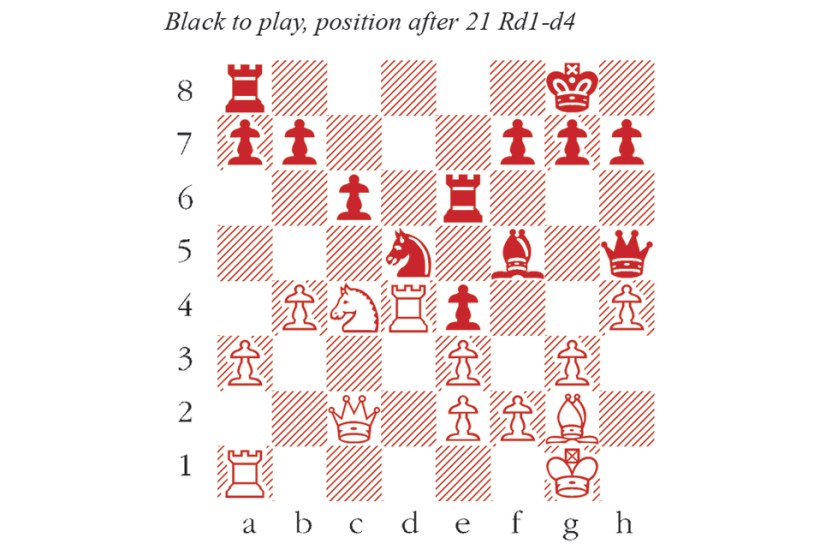The forthcoming world championship match, which begins in Astana on 9 April, was described by Garry Kasparov as an ‘amputated event’. The abdication of Magnus Carlsen, who remains the world’s strongest player, is of course a disappointment. But the 14 game match between the world number 2 and 3, respectively Ian Nepomniachtchi from Russian and Ding Liren from China, remains a gripping prospect.
Nepomniachtchi is the more aggressive and ambitious player, but his results are more volatile. In an interview in January, Carlsen stated that he considers Ding Liren to be ‘a little bit better’. In my view, Ding stands out for his capacity to endure tension for longer than his opponents, a quality which manifests in subtle ways. Suppose there are two captures available, but neither is outright good or bad, and a third option besides, most promising but also most complex. Less skilled players will consistently be tempted by one or the other capture, to reduce their cognitive burden. Ding can choose option 3 again and again, leaving the opponent to make the first concession.
But Ding is a newcomer to the visceral tension of playing for the game’s highest title. Extended matchplay weathers the psyche more than tournament play, and it is hard to imagine such a modest, shy character will relish the frenzy of media attention and clumsy questions in post-game press conferences. Nepomniachtchi may have lost his match against Carlsen in Dubai, 2021, but he at least has been through the experience, and appeared stronger than ever at the 2022 Candidates tournament in Madrid.
‘Nepo’ will start in Astana with the memory of winning their most recent decisive encounter. In Madrid he got off to a strong start, beating Ding in breezy style in the first round – see below.
Ding Liren-Ian Nepomniachtchi
Fide Candidates, Madrid 2022
1 c4 e5 2 g3 c6 3 Nf3 e4 4 Nd4 d5 5 cxd5 Qxd5 6 Nc2 Nf6 7 Nc3 Qe5 8 Bg2 Na6 9 O-O Be7 10 Ne3 O-O 11 a3 Re8 12 b4 Ng4 An interesting pawn sacrifice. I suspect the real test was to grab the pawn, though after 13 Bxe4 Qh5 14 Nxg4 Bxg4 15 f3 Bh3 16 Rf2 Black has reasonable compensation. 13 Bb2 Qh5 14 h4 Bf6 15 Qc2 Nxe3 16 dxe3 The doubled pawns are not necessarily to White’s detriment. The goal is to show that the Qh5 is out of play and that the e4 pawn may become a target. Bf5 17 Na4 I suspect that Ding wanted to eliminate any future possibility of this bishop being sacrificed on h4, opening up lines of attack, since the immediate 17…Bxh4 18 gxh4 Qxh4 19 Qc3 Qg5 20 f3 looks better for White. In fact, White’s misplaced knight turns out to be the greater problem, so an immediate counterattack with 17 b5 looks more to the point. Bxb2 18 Nxb2 Nc7 19 Nc4 Re6 20 Rfd1 Nd5 21 Rd4 (see diagram) h6 Preparing g7-g5, to open the h-file. However, the immediate 21…g5! was strategically more risky, but even more promising. 22 Qd2 22 Rad1! was a better defence, preparing to sacrifice rook for knight on d5. The second rook will be well placed on d5. Rae8 23 Kh2 A clever defensive ploy, intending to meet 23…g5 with 24 Rh1 gxh4 25 Kg1! But with this next move, Nepomniachtchi pinpoints the problem. Bg4! White’s rook can’t be on e1 and h1 simultaneously 24 Na5 Rf6 25 Kg1 g5 26 Nxb7 26 b5! to undermine the d5 knight was the last chance. gxh4 27 Nc5 h3 The attack is overwhelming 28 Rxe4 hxg2 29 Rxe8+ Kg7 30 f4 For 30 Kxg2, see the position in the puzzle, below. Qh1+ 31 Kf2 Qxa1 32 Kxg2 Bh3+ White resigns
Got something to add? Join the discussion and comment below.
Get 10 issues for just $10
Subscribe to The Spectator Australia today for the next 10 magazine issues, plus full online access, for just $10.
You might disagree with half of it, but you’ll enjoy reading all of it. Try your first month for free, then just $2 a week for the remainder of your first year.








Comments
Don't miss out
Join the conversation with other Spectator Australia readers. Subscribe to leave a comment.
SUBSCRIBEAlready a subscriber? Log in